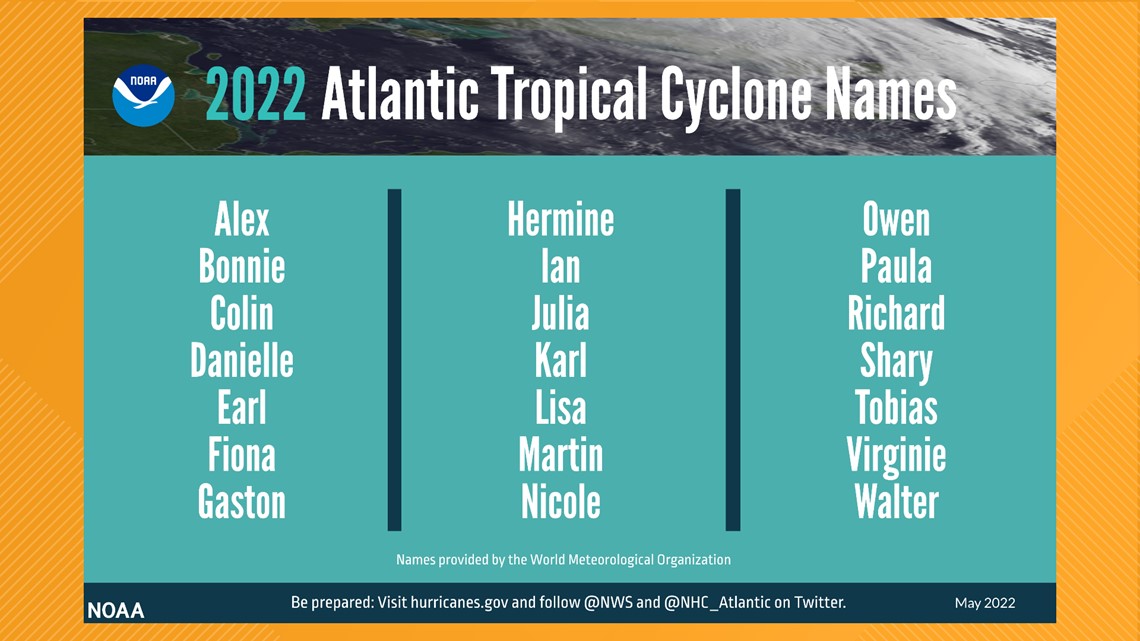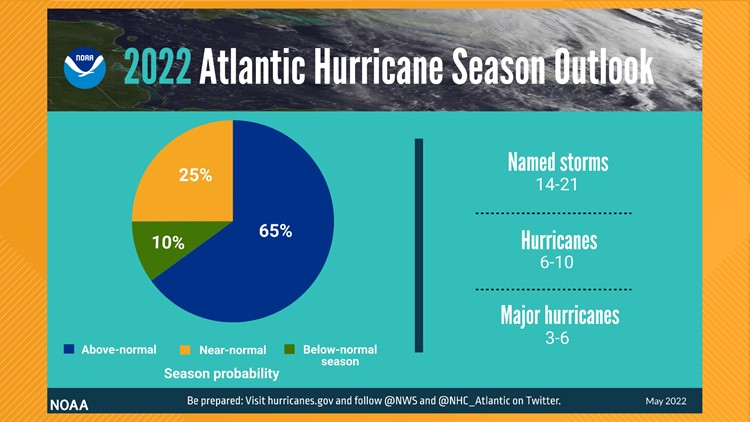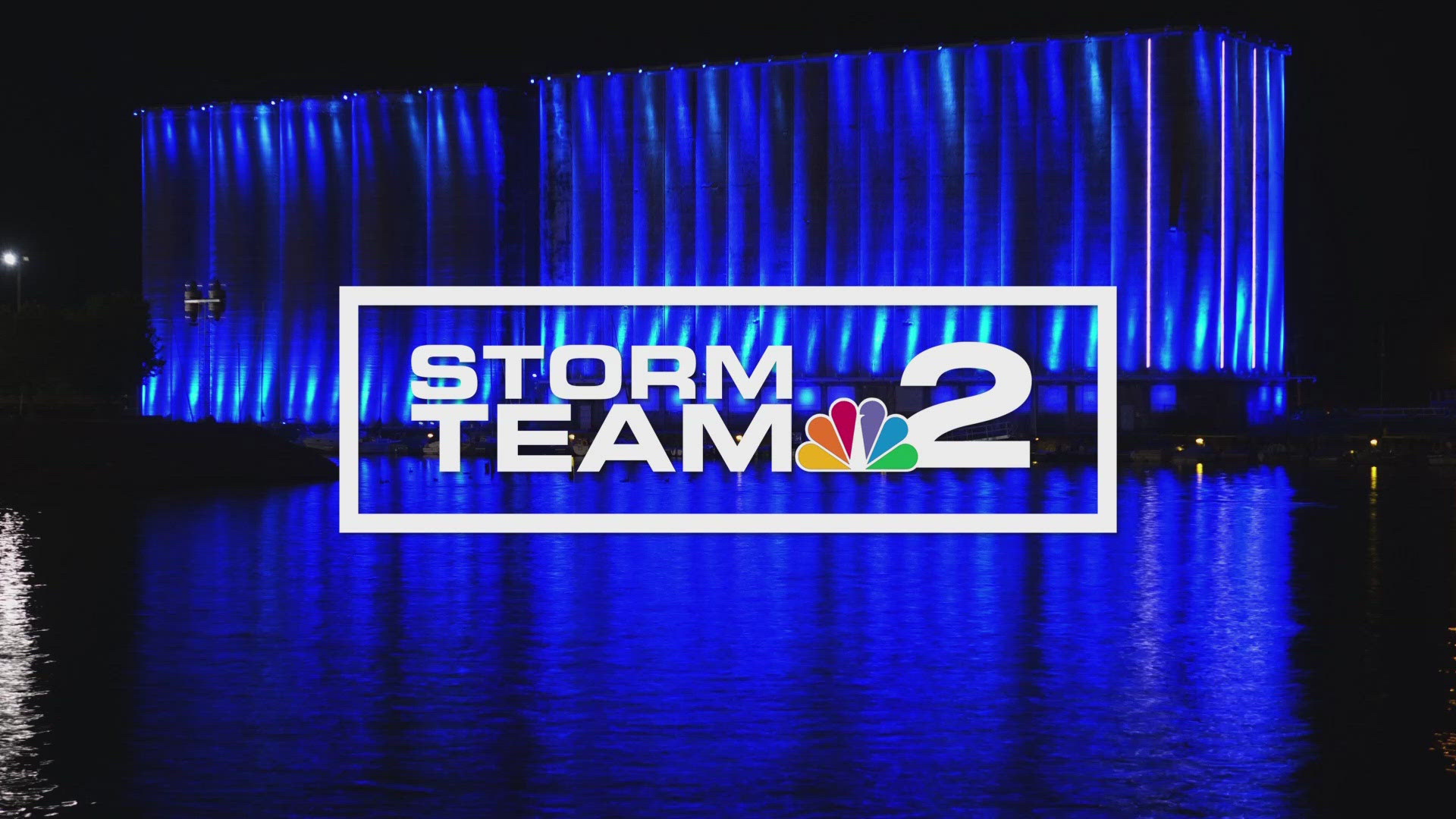BUFFALO, N.Y. — For the seventh year in a row, this Atlantic Hurricane Season is expected to be an active one with the potential for 14 to 21 named storms.
In a press conference Tuesday morning, NOAA's National Hurricane Center (NHC) released their annual outlook for the 2022 Atlantic hurricane season. With the presence of an ongoing, yet weak, La Niña over the Equatorial Pacific Ocean and the seasonal trend for above average sea surface temperatures in the Atlantic Ocean, an above average hurricane season is expected this year.
The 2022 Season Outlook from NHC includes the chance for 14 to 21 named storms, including 6 to 10 hurricanes and 3 to 6 major hurricanes of category 3 strength or higher.
This prediction comes after a record year last year with 21 named storms, making the 2021 Atlantic hurricane season the third most active season on record. That too followed what is now known as the most active hurricane season on record in 2020 with 28 named storms.
The outlook also mentions the possibility of an enhanced west African monsoon which would allow for more potential clusters of thunderstorms to travel west and become hurricanes. Additionally, more rainfall and thunderstorms over west Africa would limit the amount of Saharan dust that could get picked up by the jet stream and travel west. Saharan dust is known to be a limiting factor for tropical activity but can also help produce vibrant sunsets.
RELATED: Saharan Dust makes it to America
Here are the 21 names to be given to this season's potential tropical cyclones. And if all the names are used prior to the season coming to and end, naming will come from a pre-selected list of 21 additional names provided by the World Meteorological Organization.


During an active season, The previous method was to use the Greek alphabet once the initial 21 names were used up. But that came to an end in 2021.
The Atlantic hurricane season begins on June 1 and goes all the way through November. The typical peak in activity is right around mid-September when ocean temperatures are at their warmest.
While hurricanes do not have a direct impact on Western New York weather, tropical rainfall can reach the Northeast depending on the system's track and strength as it moves ashore.
The biggest impact for Western New Yorkers may experience from tropical weather can come with summertime and even fall travel plans.



